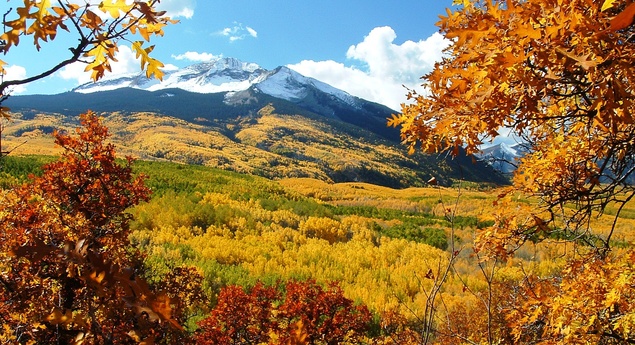 "Autumn is a second spring when every leaf is a flower." Those were the words of Nobel Laureate Albert Camus. He could not have said it better!
"Autumn is a second spring when every leaf is a flower." Those were the words of Nobel Laureate Albert Camus. He could not have said it better!
If you live above the tropics in the Northern Hemisphere, you are bound to see leaves change color and landscapes transform. This is pretty much like spring when flowers burst forth on trees during the months of September and October.
The New England region of the US attracts scores of visitors from far and wide to watch nature's brilliant show. From bright yellows to vibrant reds, leaves transform showing their rich and varied hues.
Food Factories In Plants
Have you wondered how or why leaves change colors? Well, you probably know that leaves are food factories for plants. Contained within leaf cells are disc-like structures called chloroplasts that have a green pigment known as chlorophyll. This pigment assists plants in absorbing the sunlight (energy) needed to produce oxygen and glucose from water and carbon dioxide.
In winters, when days get shorter in the Northern Hemisphere, trees begin shutting down their food factories. Without enough light for photosynthesis, they are looking to conserve and live off food stored during summer. They prepare a separation layer (abscission) at the base of the leaf that will cut off the flow of nutrients and food between the leaf and the tree.
Chlorophyll is very unstable and without any need for tapping the sun’s energy, it begins to disappear. When the overpowering green is gone, we get to see the oranges and yellows which were in the leaves all along. It is interesting to note that trees produce anthocyanin pigments (that gives leaves its red color) in the fall, to help them defend themselves against harmful insects!
Not All Fall Colors Are The Same...
As fall colors appear, other changes are taking place in trees. Where the leaf attaches to a tree, special cells develop that gradually separate the tissues that support the leaf. The tree seals the cut and eventually, the leaf blows away, leaving behind a leaf scar.
Did you know that most broad-leafed trees North of the tropics shed their leaves in the fall? In some trees such as oak and some southern species, brown leaves remain on trees till fresh leaves emerge in spring. However, evergreens and conifers such as pines, spruces, firs, hemlock, and cedar have needle-like or scale-like leaves that remain green(ish) all year around.
So what determines the degree, duration, and variety of fall colors? It turns out that apart from pigmentation, temperature, light, and water supply have an influence on the degree and the duration of fall color. Low temperatures above freezing will favor anthocyanin formation producing bright reds in maples. However, early frost will weaken the brilliant red color. Rainy and/or overcast days tend to increase the intensity of fall colors. The best time to enjoy the autumn color would be on a clear, dry, and cool (not freezing) day.
So go outdoors and enjoy nature's color fest. It lasts for only a brief period each fall.






